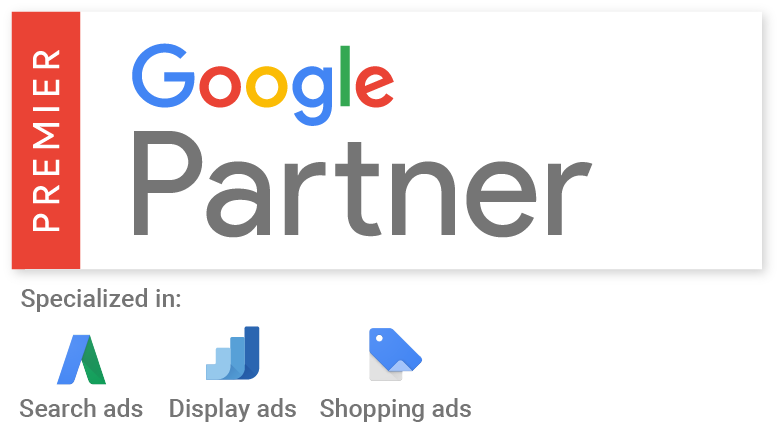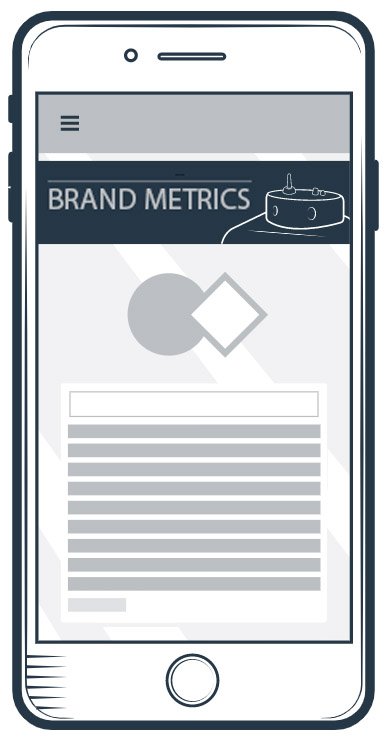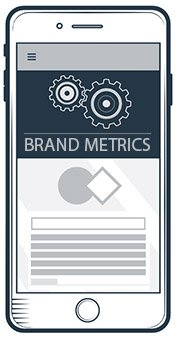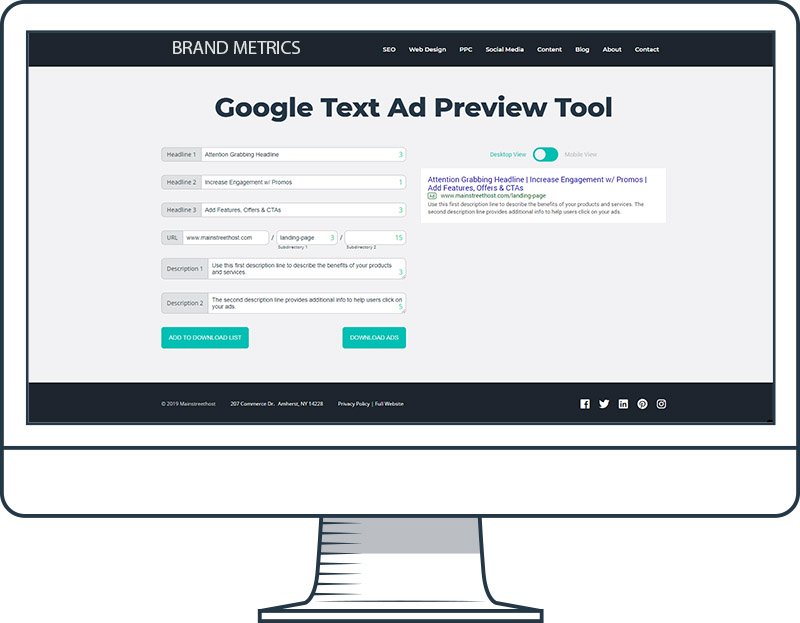PPC Management Services
Instant Traffic, Crafted to Convert.
Powerful, performance-based PPC

Have a question, Not sure where to start?
Get a FREE One-on-One Consultation

A Careful Blend of Creativity and Science
In today’s competitive online landscape, targeted traffic is key to attracting more customers at any stage of your business. Imagine your audience finding you precisely when they search for a product or service similar to yours. Picture your engaging message leading them to your website, where they are just a click away from joining your community.
This is where Pay Per Click (PPC) advertising comes into play. Displaying your ad exactly when your audience is seeking what you offer can convert them into customers.
Attracting a substantial audience involves more than just creating a few ads or selecting keywords. It requires in-depth research, testing, refinement, and scaling. We employ a unique and proven strategy to address your business challenges.

Powerful Partnership
By collaborating with our team, your significant benefit will be gaining access to Google’s Premier Partner. Our familiarity with Google’s advertising practices and standards sets us apart. Additionally, our PPC experts are adept at assisting with Ads at any stage of your PPC journey.
Key Highlights:
- Google Premier Partner
- Over 20 Years of Experience in Managing Successful Ad Campaigns
Why Pay-Per-Click?
of all internet users search with Google (Net Marketshare)
of people click on Google ads when shopping online. (Wordstream)
of PPC visitors are more likely to purchase than organic visitors. (Unbounce)
PPC Management Services
PPC ads offer the chance to secure the top spot for your relevant keywords on various search engines. With a wide array of PPC ad options, you can effectively reach your target audience. Utilize our paid ad formats to drive instant traffic to your site.
Text Ads
The text appearing above organic search results on Google are Text ads. They offer your audience a brief insight into your business and how to contact you. Essentially, these can be viewed as concise snippets providing information about your business.
- Easy to edit
- Search engine friendly
- Highly customizable
- Most popular CMS in the world


Display Ads
Visual ads are showcased across Google’s Display Network, encompassing various formats like video, image, text, or rich media. Currently, Google’s Display Network encompasses over 2 million sites that provide spaces for these display ads.
For example, your Display ad might be positioned between two paragraphs, on the right-hand side, or at the bottom of a website.
- Text, image, video or rich media advertisements
- Appear across Google’s Display Network
- Great for increasing brand awareness
Remarketing Ads
Whenever you visit a website, whether to make a purchase or to gather more information, you may notice ads appearing on search engines, news articles, and social media in the subsequent week. These are remarketing ads, designed to follow you around the internet. The great news is that you can leverage this same strategy for your purposes.
- Appear only after you visit the website
- Follow you across the web


Shopping Ads
Shopping ads appear above the Google search results and typically feature product images, prices, and store information.
- Include product image, price and merchant name
- Appear above organic search results
- High click-through rate

Google Text Ad Preview Tool
Build, preview, and download text ad campaigns effortlessly! Generate multiple versions of Google text ads, visualize your advertisements, and download an unlimited quantity of ads for your campaigns.
Don’t Think PPC Is for You?
Is your business facing challenges in establishing a presence in the market? Are you aiming to expand your business and boost sales this year? A well-executed Pay-Per-Click (PPC) strategy can address these concerns effectively. When a PPC ad campaign is managed correctly, it can yield a positive return on investment for your business. It’s a versatile approach that benefits businesses at all stages, whether it’s a startup or a publicly traded company.
Consistent research and maintenance, coupled with outperforming competitors, can be achieved through the strategic use of PPC. Our PPC team collaborates with you to create targeted ads that drive customers to your business.

Strategic Options
From Search and Shopping to Display and Remarketing ads, there’s a range of solutions to convey the perfect message for your business.

Specified Reach
Whether you run a small local store or a global brand, our targeting options enable you to precisely select where your ads will appear.

Controlled Budget
Google Ads empowers you to set your daily budget and make adjustments as required, giving you control over your spending.

Increased Exposure
PPC ads are positioned above organic search results, placing your business at the forefront of the search page and in the forefront of searchers’ thoughts.

PPC Management Services: Boost ROI & Conversions
- Understanding PPC Management
- Key Features of PPC Management Services
- Crafting Effective PPC Ad Creatives
- Enhancing Landing Page Performance
- Leveraging Remarketing Strategies
- Implementing First-Party Data Activation
- Tracking Full-Funnel ROI
- Harnessing Geofencing for PPC
- Maximizing Paid Search Advertising
- Choosing the Right PPC Agency
- Utilizing Google & Facebook Ads
- Scaling Business with PPC Services
- Final Remarks
- Frequently Asked Questions
- What is PPC management?
- How do effective PPC ad creatives impact campaign success?
- Can remarketing strategies enhance my PPC campaigns?
- Why is landing page optimization crucial for PPC campaigns?
- What role does geofencing play in PPC advertising?
- How can I track full-funnel ROI in my PPC efforts?
- Why should I consider hiring a professional PPC agency?
Navigating the digital marketing landscape, including search engine optimization and social media advertising, can be daunting, but with expert PPC management services for profitable ad campaigns, businesses gain a competitive edge. Effective PPC campaigns, a crucial part of search marketing and internet marketing efforts, require meticulous strategy and continuous optimization by a click marketing firm to ensure maximum ROI. Our marketing firm’s approach cuts through the noise, offering tailored internet marketing efforts that translate clicks into revenue in an effective way. Trust in our click marketing firm’s expertise to unlock your brand’s potential through internet marketing efforts and deliver measurable results.
In an era where online visibility is currency, precision in internet marketing and paid search advertising is non-negotiable for effective marketing efforts. We don’t just manage your internet marketing ads; we refine your search marketing and click advertising services for peak performance. From keyword selection to bid adjustments, our comprehensive PPC management services, including pay-per-click marketing, are designed to align with your unique business objectives—driving traffic to your website that converts and fostering growth in the ever-evolving internet marketplace.
Understanding PPC Management
PPC Fundamentals
PPC, or pay-per-click, is a model of internet marketing where advertisers can target clients on social media and websites through their accounts. Advertisers pay a fee each time one of their ads is clicked on a website. It’s essentially buying visits to your site.
Cost-per-click (CPC) is what you pay for each click on your website in your PPC campaigns targeting specific clients. A lower CPC means you can afford more clicks, target more clients, and gain more traffic to your account. Quality Score affects this cost and the ad position. It reflects the relevance and quality of both your target keywords and PPC ads, ensuring your account will thrive as you pay for results.
The pay-per-click ad auction is an automated process that determines which ads will appear for a specific search query, and in which order, taking into account the amount advertisers are willing to pay to thrive. Your ad rank decides where your ad shows up.
Campaign types vary from pay-per-click search network campaigns to display network ones, among others. Each type serves different goals.
Ad rank has a big impact on the visibility of paid ads per account. A higher ad rank often leads to better placement.
- Basics include understanding CPC
- Importance lies in Quality Score
- Role played by ad auctions
- Different campaign types exist
- Impact shown by ad rank
Benefits for Businesses
PPC, or pay-per-click, offers several advantages for businesses looking to increase their online presence quickly and account for their advertising spend efficiently.
It provides quick visibility in search results, unlike organic methods that take longer to show results, with pay-per-click methods. This can be crucial when launching new products or services.
With PPC (pay-per-click), ROI is directly measurable; you can see exactly how much return you’re getting on every dollar spent on advertising.
The ability to reach a targeted audience ensures that those who see your pay-per-click ads are more likely to be interested in what you offer.
Flexible budget control lets businesses start small and scale up as needed without huge upfront costs, allowing them to pay per use.
An immediate traffic boost can result from effective pay-per-click (PPC) management if it’s done right.
Businesses benefit through:
- Quick visibility boosts
- Directly measurable ROI
- Targeted audience reach
- Control over budgets
- Potential for immediate traffic increases
PPC vs Organic SEO
Comparing pay-per-click (PPC) with organic SEO reveals differences important for any digital strategy.
PPC, or pay-per-click, gives speedier results than SEO efforts which build over time.
In terms of keyword targeting, advertisers have full control over the choice with pay-per-click (PPC) while SEO requires content alignment with potential searches.
Predictability comes with using paid search compared to the volatility seen in organic rankings due to algorithm changes or competition shifts.
Both pay-per-click strategies come with cost implications: ongoing expenses for clicks versus long-term investments into content creation and optimization in SEO.
Synergy between paid searches like Google Ads and organic efforts optimizes overall online performance because they complement each other well when managed correctly.
Differences include:
- Speedier results from PPC
- More control over keyword targeting via paid campaigns
- Predictable outcomes against SEO volatility
- Cost factors associated with both strategies
By leveraging both approaches effectively:
- Create synergy between them,
- Optimize overall digital strategy,
- Achieve balanced growth long term,
Using pay-per-click (PPC) management services helps maintain focus across all these areas efficiently.
Key Features of PPC Management Services
Comprehensive Audits
PPC (pay-per-click) management services start with a deep dive into your existing campaigns. Comprehensive audits are crucial. They find where money might be wasted. Experts look at your campaign structure to see if it’s working well.
First, they check how your pay-per-click ads stack up against competitors’. This involves analyzing strategies used by others in your market. Knowing what others do helps shape better campaigns.
Next, they evaluate the keywords you’re using. Are they bringing in the right traffic? It’s important to check their performance regularly.
Finally, audits ensure everything lines up with your business goals. Your PPC efforts should always support these objectives.
- Identifying wasteful spending.
- Assessing efficiency.
- Competitor strategy analysis.
- Keyword performance checks.
These steps help refine and improve pay-per-click (PPC) campaigns over time.
Bid Management
Managing bids is a complex task but key for success in pay-per-click (PPC) advertising. Bid management involves several strategic moves to stay ahead.
Automated tools can take some of the load off here. They adjust pay-per-bid within parameters you set based on real-time data.
Still, humans must oversee these systems to ensure profitability and visibility balance out correctly. You don’t want to overspend per click for too little return or miss opportunities by bidding too lowly.
Performance data guide bid adjustments continuously—especially important for mobile users who behave differently and may have different pay levels than desktop ones.
Key points include:
- Using competitive strategies.
- Leveraging automation carefully.
- Keeping an eye on profit versus visibility.
- Making ongoing adjustments from real data insights.
Conversion Tracking
The end goal of any pay-per-click (PPC) campaign is conversion—whether that’s a sale, sign-up, or another action valuable to your business; hence why conversion tracking is vital among features offered by PPC management services.
Setting accurate goals comes first when tracking conversions properly—it’s about knowing what counts as success for you specifically and making sure those actions get tracked every time someone clicks through from an ad onto your site or app page after seeing one of yours elsewhere online (like social media).
Integrating this pay-per-click tracking with analytics platforms gives a full picture of user behavior post-click which allows businesses not only to see what happens once someone arrives but also understand patterns leading them there so future bids can be optimized accordingly based upon solid conversion data rather than guesswork alone!
Attribution modeling goes even deeper into understanding how different touchpoints contribute towards eventual conversions allowing more nuanced optimization efforts moving forward too!
To sum up:
- Set clear conversion goals upfront.
- Integrate fully with analytics tools for complete insight into post-click behavior.
- Use attribution models wisely to understand multiple touchpoints’ impact before optimizing further based on solid evidence rather than hunches alone!
Crafting Effective PPC Ad Creatives
Ad Copywriting
Crafting compelling call-to-actions (CTAs) is crucial for successful pay-per-click (PPC) ad creatives. A strong CTA guides users on what to do next, like ‘Buy Now’ or ‘Sign Up’. It should be clear and persuasive.
Writing headlines that capture attention is also key. Headlines are the first thing people see. They must be catchy and relevant to stand out in a sea of ads.
Incorporating keywords effectively in pay-per-click ad text ensures ads are relevant to user searches. This improves quality score and ad ranking.
A/B testing different ad copy variations helps find what resonates with your audience. Test various CTAs, headlines, or descriptions.
Aligning ad copy with landing page content creates a cohesive pay-per-click message. The transition from the ad to the landing page should feel seamless for better user experience.
Visual Design
The impact of visual elements on ad performance can’t be overstated. Good design captures interest and keeps it.
Best practices for display ad design include simplicity, readability, and a clear focal point.
Using images can significantly increase click-through rates (CTR). Images should be high-quality and relevant to the advertisement’s offer.
Creating mobile-friendly designs ensures your ads look good on any device.
Maintaining brand consistency across all ads fosters trust and recognition among potential customers.
Enhancing Landing Page Performance
A/B Split Testing
Once you have crafted effective PPC ad creatives, the next step is to ensure that your landing pages are optimized for pay-per-click performance. A/B split testing plays a crucial role in this process. It involves comparing different elements of your ads systematically to determine which versions perform the best.
First, consider testing variations of landing pages themselves. You might change images, headlines, or even the overall layout. Next, look at the impact of pay-per-CTA (call-to-action) changes. Is “Buy Now” more effective than “Learn More”? Use split testing tools to run these experiments efficiently.
After running tests, it’s important to interpret the results accurately. They guide future revisions and can lead to significant improvements in conversion rates when applied correctly.
- Systematically compare ad elements
- Test multiple landing page designs
- Measure how different CTAs affect user behavior
- Utilize specialized tools for efficient testing
- Interpret results to inform further optimization
CRO Strategies
With insights from A/B split testing in hand, apply Conversion Rate Optimization (CRO) strategies to boost performance further. The goal here is simple: improve conversion rates using targeted tactics.
Enhance user experience on your landing pages first and foremost; a positive experience encourages conversions. Consider every aspect—from site speed and navigation ease to content clarity—and make adjustments where necessary.
Next, leverage upselling during the conversion process without being intrusive; suggest related products or services that add value for customers already making a purchase decision.
Streamline checkout processes as well; remove unnecessary steps that could deter potential buyers from completing their purchases. Lastly, personalize offers based on user data—tailored experiences often translate into increased conversions.
- Implement tactics targeting higher conversion rates
- Focus on enhancing user experience for better engagement
- Upsell effectively during customer transactions
- Simplify checkout processes for ease of purchase
- Personalize offers based on customer preferences
Leveraging Remarketing Strategies
Campaign Design
To increase ecommerce revenue, designing an effective pay-per-click (PPC) campaign is crucial. You must structure campaigns to be highly relevant. This means tailoring them to meet your business goals. For instance, a pay-per-click campaign for an ecommerce brand might focus on boosting online sales during the holiday season.
Segmenting audiences allows for targeted messaging. Imagine you sell sports equipment. You could create segments like “fitness enthusiasts” or “outdoor adventurers” and craft messages that speak directly to their interests.
Choosing the right settings is another key step in campaign design. If your objective is brand awareness, you might opt for broader reach settings; if it’s conversions, then more focused targeting would be appropriate.
Planning retargeting strategies within campaigns helps keep your brand top-of-mind for potential customers who have already shown interest but haven’t yet made a purchase.
Audience Targeting
Remarketing excels at reaching those who are most likely to buy from you—your ideal customers, per interaction. Defining customer profiles involves understanding who they are, what they want, and how they shop.
Utilizing demographic data sharpens targeting precision. For example, if your ecommerce store sells maternity clothing, targeting women in the 20-40 age range may yield better results than a general approach.
Interest-based targeting taps into users’ browsing habits and preferences per their online activities. A user looking at running shoes online can later see ads from sports stores while surfing other websites or social media platforms.
Exploring lookalike audiences offers opportunities for expansion by finding new people similar to existing customers—potentially increasing your customer base without sacrificing relevance.
Refining audiences over time through feedback ensures continuous improvement of remarketing efforts per trends and seasons—a vital process as audience behavior changes.
Implementing First-Party Data Activation
Data Collection
Gathering actionable insights is crucial for PPC management services. It involves collecting data that can guide decision-making. By using tracking pixels, businesses ensure the accuracy of their campaign data. These small pieces of code on websites track user behavior and conversions.
Analyzing cross-device usage patterns is also key. People switch between devices, so understanding this behavior helps in optimizing campaigns. For example, if most conversions happen on mobile, you might prioritize mobile ads.
Capturing audience interaction metrics provides a clear picture of engagement levels. Metrics like time on site and pages visited are valuable. They tell us what content keeps users interested.
Finally, prioritizing data privacy and compliance cannot be overlooked. With regulations like GDPR in place, respecting user privacy is both ethical and legal necessity.
Targeting Precision
To enhance PPC performance, precision targeting is essential.
Fine-tuning location settings allows ads to reach people in specific areas. If your service targets urban areas primarily, you wouldn’t waste money showing ads elsewhere.
Customizing ad delivery times can increase effectiveness too. Knowing when your audience is online guides you to schedule ads accordingly.
Utilizing device targeting options ensures that the right format reaches the appropriate device type — whether it’s smartphone or desktop-focused audiences that convert better for your business model will determine where to focus efforts more heavily upon.
Applying language preferences caters to multilingual audiences effectively as well as respect cultural nuances which may influence purchasing decisions within different markets globally speaking; thus enhancing overall campaign relevance significantly indeed!
Leveraging keyword match types aids in reaching those with intent closely aligned with what’s being offered by narrowing down searches only relevant terms are triggered by; broad matches could attract irrelevant traffic whereas exact matches might limit visibility too much – finding balance here proves critical success factor certainly!
Tracking Full-Funnel ROI
Performance Metrics
Understanding the full impact of PPC management services requires tracking a variety of performance metrics. These metrics help in assessing how well your ads are doing and where there’s room for improvement.
Click-through rates (CTR) offer insights into how often people click on an ad after seeing it. A high CTR generally indicates that an ad is relevant and engaging to viewers. For instance, if you have a CTR of 5%, it means that out of every 100 impressions, your ad gets clicked on five times.
Cost per acquisition (CPA) measures the cost to acquire one paying customer from a campaign. It’s crucial for budgeting and understanding the value each customer brings to your business. If you’re spending $50 CPA but each customer only spends $30, there’s a clear mismatch.
Tracking return on ad spend (ROAS) reveals whether the money spent on ads is generating profit or loss. ROAS can be calculated by dividing revenue generated from ads by the amount spent on those ads. This metric helps ensure you’re not overspending for the returns received.
Evaluating impression share metrics shows what percentage of times your ads were shown out of all possible scenarios they could have been shown in. This can indicate market saturation or missed opportunities due to budget constraints or bid settings.
Lastly, assessing average position informs about how high up in search results or page placements your advertisements typically appear. The impact here is direct; higher positions usually lead to more visibility and potentially more clicks.
KPI Analysis
After activating first-party data, as discussed previously, it becomes essential to align this with key performance indicators (KPIs) that reflect business goals effectively.
Identifying KPIs relevant to goals ensures focus remains on outcomes like driving qualified traffic rather than vanity metrics which may not contribute directly toward business success.
Benchmarking against industry standards provides context for these KPIs—knowing what good looks like allows businesses to set realistic targets and aspirations within their campaigns.
Correlating KPIs with business outcomes highlights their real-world significance: increased traffic must translate into sales or leads; otherwise, it might not represent qualified traffic after all.
Periodic review of KPI progress keeps strategies current and responsive; businesses need agility in adjusting tactics based upon fresh data insights regularly.
Adjusting strategies based on KPI trends is fundamental — if certain keywords are underperforming while others excel, reallocating budgets accordingly can optimize overall campaign effectiveness.
Harnessing Geofencing for PPC
Location-Based Ads
Geofencing is a powerful tool in PPC management services. It lets advertisers send ads to people within a defined geographic area. This targeted approach can lead to better ad performance.
One key tactic is geo-targeting ads to specific regions. For example, a coffee shop might target users within a five-mile radius during the morning rush hour.
Localized messaging makes ads more relevant. A hardware store could highlight snow shovels just as winter hits New England.
Location extensions can be very effective too. They add details like your address and phone number right in the ad, making it easier for customers to find you.
It’s also smart to capitalize on local search trends. If an upcoming festival is trending locally, businesses can tailor their ads around it.
Lastly, adjustments based on regional performance are critical. If certain areas respond well, you might increase your bid there or adjust your messaging accordingly.
User Engagement
Engagement drives success in PPC campaigns. Crafting interactive ad formats is one way to boost this engagement.
Interactive formats include quizzes or polls that invite user participation directly from the ad itself.
Encouraging social sharing through ads can amplify reach exponentially. Imagine an exclusive deal that rewards users for sharing with friends.
Video content fosters engagement effectively too. A short tutorial video about using a product could keep potential customers watching longer than they would read text.
Offers and discounts incentivize actions like signing up for newsletters or making first-time purchases.
Finally, measuring engagement through analytics helps understand what works best so you can repeat successful strategies and improve upon them over time.
Maximizing Paid Search Advertising
Keyword Research
Keyword research is the foundation of effective PPC management services. It involves finding words and phrases that potential customers use when searching for products or services online.
The first step is to uncover high-intent keywords. These are terms used by people ready to make a purchase. For instance, someone typing “buy running shoes online” shows more intent than “running shoe info.”
Next, it’s crucial to analyze keyword competition levels. High-competition keywords can be costly and challenging to rank for in paid search results.
Identifying long-tail keyword opportunities is also essential. Long-tail keywords are longer, more specific phrases with less competition but high relevance, like “women’s waterproof trail running shoes.”
Balancing broad and exact match keywords helps reach a wider audience while maintaining specificity. Broad match may target general terms whereas exact match targets precise searches.
Finally, seasonal keyword planning can capitalize on certain times of the year when searches spike due to holidays or events.
Search Engine Marketing
Integrating PPC with broader SEM strategy ensures consistency across all search marketing efforts.
Understanding the role of search engines in user discovery helps tailor ads effectively. People turn to search engines as a primary tool for finding information on goods and services they need.
Capitalizing on commercial intent queries means focusing on those who have decided what they want but haven’t chosen where from yet — a prime opportunity for advertisers using pay-per-click models.
Navigating the complexities of SEM platforms requires expertise in various tools like Google Ads or Bing Ads which offer robust options for targeting and ad customization.
Lastly, harmonizing organic and paid search tactics leads to a cohesive online presence that maximizes visibility across both channels.
Choosing the Right PPC Agency
Agency Evaluation
Selecting a PPC agency can be daunting. You want one that drives results and aligns with your company’s ethos. Here’s how to evaluate potential agencies.
First, assess their track record. Look at past campaigns they’ve managed. Are there success stories? Client testimonials provide insight into their effectiveness and reliability.
Next, consider transparency and reporting capabilities. A good agency provides clear reports on campaign performance. They should explain metrics in simple terms so you understand where your money goes.
Lastly, certifications matter too. Partnerships with platforms like Google Ads or Microsoft Advertising signal expertise. An agency’s culture is also key; it must match your communication style for smooth collaboration.
Service Customization
Customized services are crucial in PPC management.
Agencies should tailor services to fit unique business needs. Not all strategies work for every business type or size.
Scalable solutions help businesses grow without breaking the bank.
Markets change rapidly; an agile PPC agency adapts strategies accordingly.
Industry-specific expertise brings valuable insights to campaigns.
Flexibility means the service offerings evolve as your needs do.
Utilizing Google & Facebook Ads
Platform Differences
When managing PPC campaigns, understanding the differences between platforms is crucial. Google Ads and Bing Ads are two giants in online advertising. Each platform has its unique features and audience behaviors.
Google’s vast reach makes it a powerhouse for search-driven campaigns. It offers extensive targeting options based on user intent. This can lead to high conversion rates if managed well.
Bing Ads often have lower competition and cost-per-clicks (CPCs). They allow access to an older demographic that trusts Bing as their default search engine.
Integrating campaigns across these platforms can be beneficial. It enables advertisers to capture audiences at different stages of the buying process.
Diversifying ad spend is another strategy for risk management. If one platform underperforms, others may balance overall performance.
Strategic leverage of each platform’s strengths leads to better campaign results. For instance, use Google’s analytical tools for data-driven decisions while tapping into Bing’s lower CPC market.
- Google Ads: Best for reaching large audiences with clear purchase intent.
- Bing Ads: Ideal for targeting an older demographic with less competition.
Cross-platform integration ensures consistent messaging and branding across all channels.
Ad Optimization
Optimizing ads is a continuous process that involves refining various components of your campaign. Constant improvement helps reduce wasted spend and increase ROI from PPC management services.
Dynamic keyword insertion (DKI) allows ads to automatically include terms matching users’ searches. This relevance boosts ad performance by making messages more specific to individual queries.
Reducing wasted spend through optimization means cutting off non-performing keywords or tweaking bids according to device performance or time of day strategies.
Improving Quality Score is essential in enhancing ad relevancy which directly impacts CPC and ad position in SERPs (Search Engine Results Pages). A higher Quality Score signifies more relevant ads leading to better click-through rates (CTR).
Iterative testing helps find the most effective ad placements whether they’re on social media platforms like Facebook or within search results pages.
- Continuous refinement: Adjust bids, test new copy, swap out images regularly.
- Dynamic keyword insertion: Make sure ads match what people are searching for closely.
- Reducing waste: Turn off low-performing elements promptly after analysis.
Scaling Business with PPC Services
Sales Acceleration
PPC management services can shorten sales cycles. They do this by targeting ads very carefully. Ads are designed to reach people at different stages of the buying process. This helps move them through the funnel faster.
Targeted ads work best when they match where a customer is in their journey. For example, early-stage prospects might see educational content. Those closer to buying may get special offers.
Remarketing is another powerful tool for sales acceleration. It brings back visitors who didn’t convert on their first visit. By showing them relevant ads, these potential customers remember your brand and products.
Landing pages play a crucial role too. They must be optimized to capture leads effectively. A good landing page will have a clear message and a strong call-to-action (CTA).
Finally, integrating CRM data helps refine ad targeting even more. It allows businesses to create highly personalized ad experiences based on past interactions.
- Targeting customers accurately shortens the sales cycle.
- Ad alignment with funnel stages aids in guiding prospects.
- Remarketing re-engages those who showed interest but left without converting.
- Optimized landing pages improve lead capture rates.
- CRM integration ensures ad relevance and personalization.
Growth Strategies
Scaling campaigns should go hand-in-hand with business growth plans. PPC management services help you scale up efficiently while keeping costs under control.
To tap into new markets, PPC can be invaluable. Ads can target regions or demographics that haven’t been explored yet by your business.
Strategic bidding is essential for gaining market share quickly. Bidding higher on certain keywords might make sense if it means outpacing competitors.
Understanding future trends also informs strategy adjustments in PPC campaigns before shifts happen in the market itself.
Collaboration across departments ensures that growth strategies are comprehensive and unified across all fronts of the business. Marketing efforts need to align with overall company objectives for holistic growth.
By using strategic bids and forecasting trends, companies stay ahead of competition:
- Scale campaigns as your business grows; keep spending efficient.
- Use PPC to explore new markets; find untapped opportunities easily.
- Apply strategic bidding methods; gain significant market share swiftly.
- Forecast trends; adjust strategies proactively rather than reactively. 5 . Collaborate across teams; ensure marketing supports broader company goals.
Final Remarks
Navigating the complexities of PPC management services demands expertise and strategic finesse. This article has dissected essential facets, from crafting compelling ad creatives to leveraging remarketing strategies and activating first-party data for targeted campaigns. By focusing on enhancing landing page performance and tracking full-funnel ROI, businesses can maximize their paid search advertising efforts. The importance of choosing the right PPC agency cannot be overstated, as it underpins the successful scaling of business operations through Google and Facebook Ads, as well as innovative approaches like geofencing.
The pathway to digital marketing success is clear: businesses must invest in robust PPC management to stay ahead in a competitive online landscape. With the insights provided, companies are equipped to make informed decisions that drive growth and profitability. Act now—partner with a top-tier PPC agency to unlock your business’s full potential and witness a transformative impact on your bottom line.
Frequently Asked Questions
What is PPC management?
PPC management involves overseeing and optimizing pay-per-click advertising campaigns to improve performance and ROI.
How do effective PPC ad creatives impact campaign success?
Strong PPC ad creatives increase click-through rates and conversions by resonating with the target audience.
Can remarketing strategies enhance my PPC campaigns?
Yes, remarketing targets past visitors, increasing the likelihood of conversion through tailored ads.
Why is landing page optimization crucial for PPC campaigns?
Optimized landing pages boost conversion rates by providing a seamless user experience that aligns with ad messaging.
What role does geofencing play in PPC advertising?
Geofencing allows for targeting specific geographic areas, enhancing relevance and engagement of your ads.
How can I track full-funnel ROI and performance tracking in my profitable PPC ad campaigns?
Track interactions across all stages of the sales funnel to measure comprehensive campaign effectiveness and ROI accurately.
Why should I consider hiring a professional PPC agency?
A skilled agency brings expertise in strategy, execution, and analysis to maximize your campaign’s performance.
